
The cycle Architekti CZ visited Zlín
The third discussion evening of Czech architects, which follows the similarly named book of twenty interviews Architects CZ, took place on April 11, 2016, at the Baťa Institute in Zlín. Given the region, the discussions particularly focused on tradition and prefabrication as possible tools of architecture.
The crowded foyer of the cultural complex 14|15 looked forward to a group of six architects who accepted the invitation to debate. On stage were architect and actor David Vávra, the renowned creator of sacred buildings Marek Štěpán, and Svatopluk Sládeček, known for his original houses. Also present was Jitka Ressová from the Zlín studio Ellement, architect Kamil Mrva from Kopřivnice, and Ondřej Chybík, one of the co-authors of the Czech Pavilion at last year's EXPO. The entire evening and discussion were led by Jaroslav Sládeček, author of the mentioned interview book. Its publication was also supported by KOMA Modular, which contributed to the success of the entire cycle as its main partner.
When talking about tradition in Zlín, one cannot overlook the so-called Baťa house. However, this iconic representative of interwar architecture in the city cannot hide its age or the technical condition that corresponds to the original intention of temporary construction. The recently completed reconstruction of one such house was carried out by the studio Ellement, and since the result is truly impressive, there is interest among other investors for the same design. However, Jitka Ressová consistently avoids mindless copying, as even clients cannot be identical. According to her, everyone has their personal requirements that can be appropriately reflected in the project, even with the limited scope for intervention in the case of the heritage-protected Baťa colony.
Expressions of traditional architecture can, however, look completely different, especially in the case of new constructions - in a contemporary winery project, Ondřej Chybík demonstrated that one can work with its form. Conversely, Marek Štěpán purposefully uses materials in their original form, noting that "he prefers to plaster a brick wall directly, without insulation, and preferably with the original lime plaster."
The lively debate was sparked by the topic of architectural prefabrication, which was also contributed to by questions from the audience. One of the questions focused on the existence of a break or scale, beyond which the resulting architecture loses its "humanity." An example could be extensive panel housing estates, whose uniformity has recently been replaced by the bright colors of insulated facades. Although David Vávra participated in one such transformation authorially, he does not see it as a significant improvement – like the other discussing architects, he perceives the problem rather at the level of interpersonal relationships.
The attendees might have been surprised by how many of the present architects had completed projects using modules or prefabricated elements. Kamil Mrva has experience with wooden panels, while the Freedomky are already complete modular houses penned by Marek Štěpán. However, the greatest expert was Ondřej Chybík, who, together with Michal Krištof, designed the Czech Pavilion at EXPO in Milan in 2015 from large-format KOMA modules. He elaborated on current projects from their studio and the possibilities that modules offer.
One such possibility is the excellent variability, which is aptly demonstrated by the planned construction of the Center for Modular Architecture at the KOMA Modular site – it will be assembled from elements that were used for the pavilion. This, in turn, illustrates another advantage of the Vizovice modules, which is the problem-free change of utility function.
Looking into the future, prefabrication is indeed one of the paths that architecture can take. Another option was outlined by Svatopluk Sládeček in the form of smart organic materials, where desired results can be achieved through genetic modification. However, we are still in a world of concrete, bricks, and modules, and as David Vávra succinctly remarked, "each of them can be beautiful, and each can be ugly." A concluding remark was made by Marek Štěpán, stating that, in his opinion, the future belongs to architecture without architects.
The goal of the discussions Architects CZ is primarily to stimulate debate on topics that connect the architectural profession with everyday life. The purpose of the evening is to bring the human side of famous architects closer to the public, facilitate personal encounters with these leading figures of Czech architecture, and get acquainted with their opinions and principles live.
The crowded foyer of the cultural complex 14|15 looked forward to a group of six architects who accepted the invitation to debate. On stage were architect and actor David Vávra, the renowned creator of sacred buildings Marek Štěpán, and Svatopluk Sládeček, known for his original houses. Also present was Jitka Ressová from the Zlín studio Ellement, architect Kamil Mrva from Kopřivnice, and Ondřej Chybík, one of the co-authors of the Czech Pavilion at last year's EXPO. The entire evening and discussion were led by Jaroslav Sládeček, author of the mentioned interview book. Its publication was also supported by KOMA Modular, which contributed to the success of the entire cycle as its main partner.
When talking about tradition in Zlín, one cannot overlook the so-called Baťa house. However, this iconic representative of interwar architecture in the city cannot hide its age or the technical condition that corresponds to the original intention of temporary construction. The recently completed reconstruction of one such house was carried out by the studio Ellement, and since the result is truly impressive, there is interest among other investors for the same design. However, Jitka Ressová consistently avoids mindless copying, as even clients cannot be identical. According to her, everyone has their personal requirements that can be appropriately reflected in the project, even with the limited scope for intervention in the case of the heritage-protected Baťa colony.
Expressions of traditional architecture can, however, look completely different, especially in the case of new constructions - in a contemporary winery project, Ondřej Chybík demonstrated that one can work with its form. Conversely, Marek Štěpán purposefully uses materials in their original form, noting that "he prefers to plaster a brick wall directly, without insulation, and preferably with the original lime plaster."
The lively debate was sparked by the topic of architectural prefabrication, which was also contributed to by questions from the audience. One of the questions focused on the existence of a break or scale, beyond which the resulting architecture loses its "humanity." An example could be extensive panel housing estates, whose uniformity has recently been replaced by the bright colors of insulated facades. Although David Vávra participated in one such transformation authorially, he does not see it as a significant improvement – like the other discussing architects, he perceives the problem rather at the level of interpersonal relationships.
The attendees might have been surprised by how many of the present architects had completed projects using modules or prefabricated elements. Kamil Mrva has experience with wooden panels, while the Freedomky are already complete modular houses penned by Marek Štěpán. However, the greatest expert was Ondřej Chybík, who, together with Michal Krištof, designed the Czech Pavilion at EXPO in Milan in 2015 from large-format KOMA modules. He elaborated on current projects from their studio and the possibilities that modules offer.
One such possibility is the excellent variability, which is aptly demonstrated by the planned construction of the Center for Modular Architecture at the KOMA Modular site – it will be assembled from elements that were used for the pavilion. This, in turn, illustrates another advantage of the Vizovice modules, which is the problem-free change of utility function.
Looking into the future, prefabrication is indeed one of the paths that architecture can take. Another option was outlined by Svatopluk Sládeček in the form of smart organic materials, where desired results can be achieved through genetic modification. However, we are still in a world of concrete, bricks, and modules, and as David Vávra succinctly remarked, "each of them can be beautiful, and each can be ugly." A concluding remark was made by Marek Štěpán, stating that, in his opinion, the future belongs to architecture without architects.
The goal of the discussions Architects CZ is primarily to stimulate debate on topics that connect the architectural profession with everyday life. The purpose of the evening is to bring the human side of famous architects closer to the public, facilitate personal encounters with these leading figures of Czech architecture, and get acquainted with their opinions and principles live.
The English translation is powered by AI tool. Switch to Czech to view the original text source.
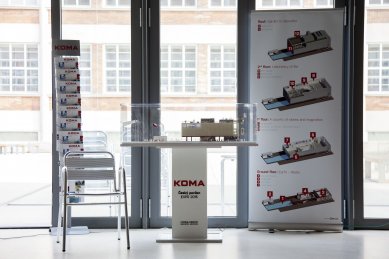

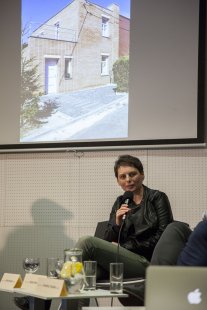
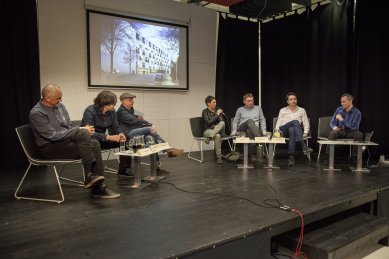
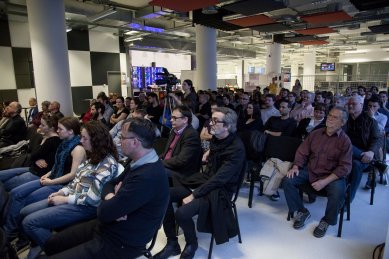
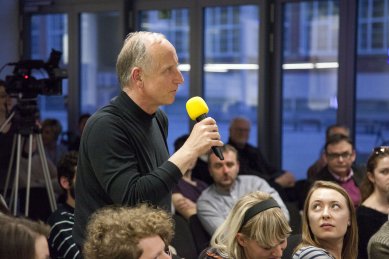
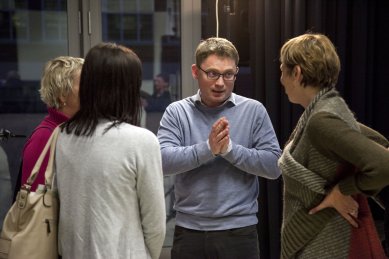
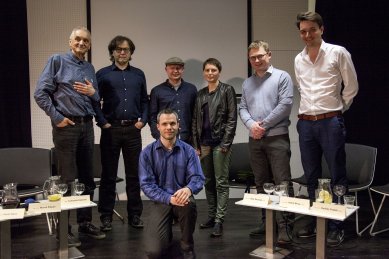
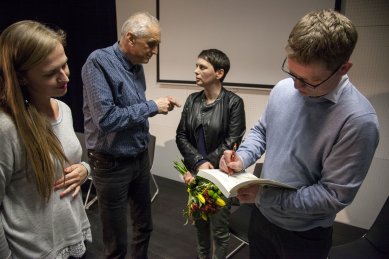
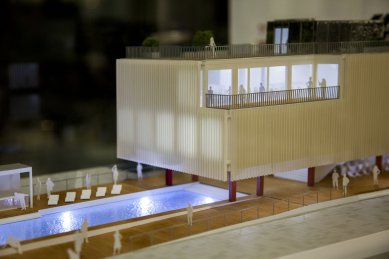
0 comments
add comment













